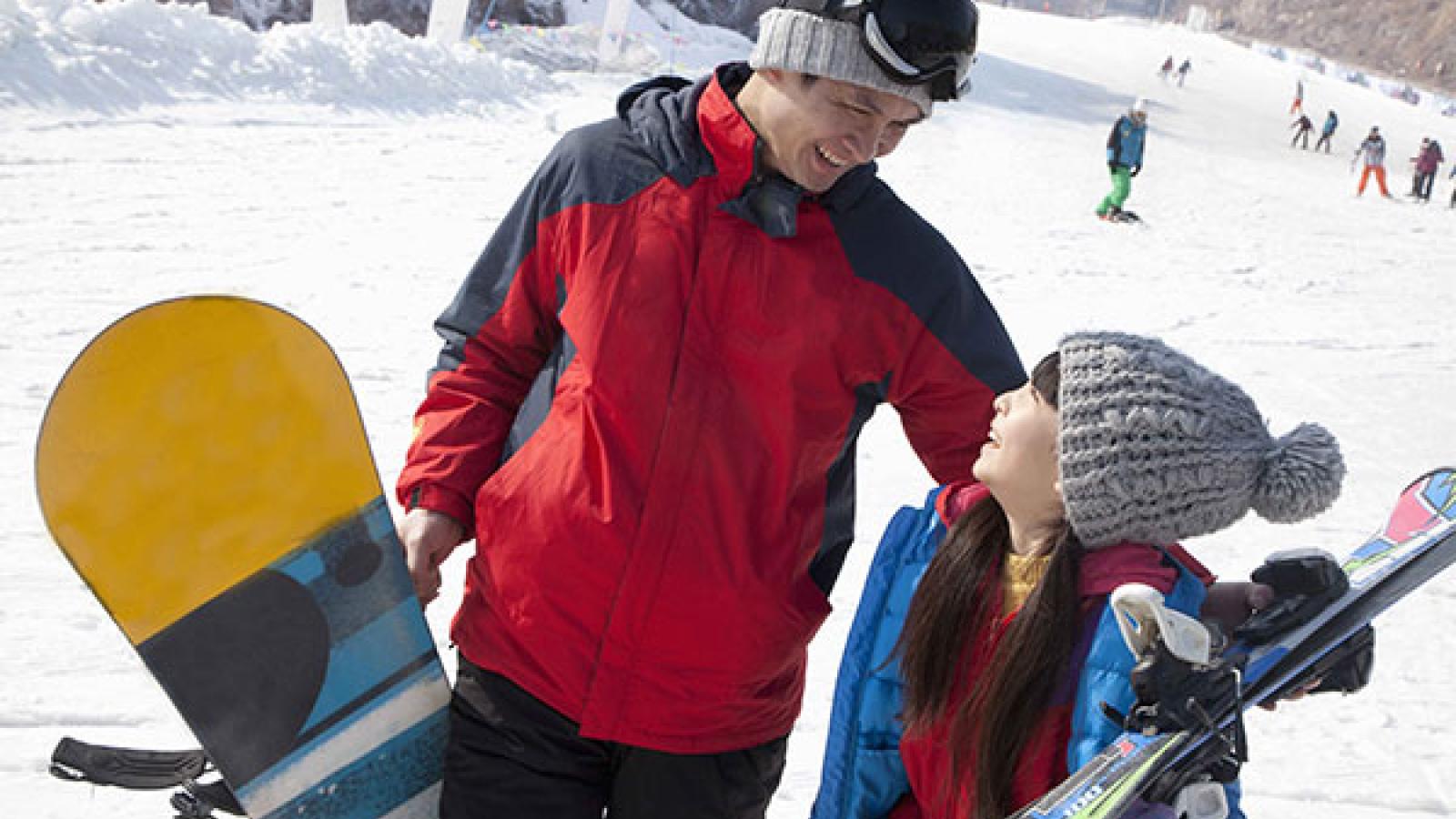The Winter Sports Safety Guide

Enjoying an active winter vacation? Follow these 5 steps to help you stay injury-free.
Many people enjoy winter activities such as skiing, snowboarding, ice skating and sledding. These types of winter sports offer a great way to be physically active while having fun with family and friends.
But before you head out for a day, weekend or week of fun in the cold and snowy weather, it's important to take a few precautions to avoid injury. Snowboarding, skiing, sledding and ice skating account for thousands of emergency room visits a year. According to the U.S. Center for Disease Control and Prevention, snowboarding results in one-quarter of all sports injury related ER visits during the winter months. Even sledding accounts for over 50,000 injuries a year, mostly to children age 14 and younger.
With a little common sense, as well as our winter sports safety guide, you can avoid many of the mishaps that lead to sprains, strains, fractures and dislocations.
5 Tips to Avoid Winter Sports Injuries:
- Warm up. Cold muscles, tendons and ligaments are more vulnerable to injury, so get your body warmed up by doing 10 minutes of physical activity before heading out on the slopes or the rink.
- Gear up. Wear appropriate protective gear for the sport, such as goggles, helmets, gloves and padding. Choose footwear that provides adequate ankle support. Also make sure all equipment is working properly and fits well before getting started.
- Take a lesson. Taking lessons from a qualified instructor can help you perform better. More importantly, you'll learn how to fall correctly so you're less likely to get hurt on the way down.
- Pay attention. Make sure you know and abide by the rules of the sport and are aware of posted weather or safety warnings. Pay attention to other people around you, as well as obstacles that may be in your way.
- Listen to your body. Slow down or stop when you are in pain or are tired. Many injuries take place at the end of the day when you are most fatigued. Also be aware of signs of frostbite, dehydration and sunburn.
Many winter sports injuries can be prevented simply by staying alert and stopping to rest when you feel tired. Being in good physical condition before you go can also help reduce the chance of injury.
Sports Medicine at Guthrie
When an injury strikes, we understand how important a fast recovery is to your athlete. That’s why our team of sports medicine caregivers share one common goal – to get our athletes back in the game as quickly and safely as possible.
Our caregivers are equipped to handle a wide variety of sports injuries, offering injury evaluation, concussion management, physical therapy, surgical procedures and more. In addition to the vast network of Guthrie providers across numerous specialties, we can ensure your athlete receives the best care possible, no matter the condition.
Copyright 2018-2021 © Baldwin Publishing, Inc. All rights reserved. Health eCooking® is a registered trademark of Baldwin Publishing, Inc. Cook eKitchen™ is a designated trademark of Baldwin Publishing, Inc. Any duplication or distribution of the information contained herein without the express approval of Baldwin Publishing, Inc. is strictly prohibited.
Date Last Reviewed: October 12, 2018
Editorial Review: Andrea Cohen, Editorial Director, Baldwin Publishing, Inc. Contact Editor
Medical Review: Andrew P. Overman, DPT, MS, COMT, CSCS
Learn more about Baldwin Publishing Inc. editorial policy, privacy policy, ADA compliance and sponsorship policy.
No information provided by Baldwin Publishing, Inc. in any article is a substitute for medical advice or treatment for any medical condition. Baldwin Publishing, Inc. strongly suggests that you use this information in consultation with your doctor or other health professional. Use or viewing of any Baldwin Publishing, Inc. article signifies your understanding and agreement to the disclaimer and acceptance of these terms of use.

